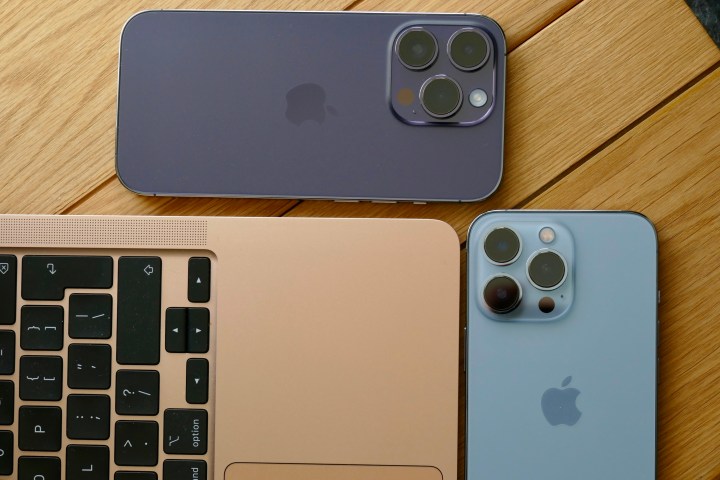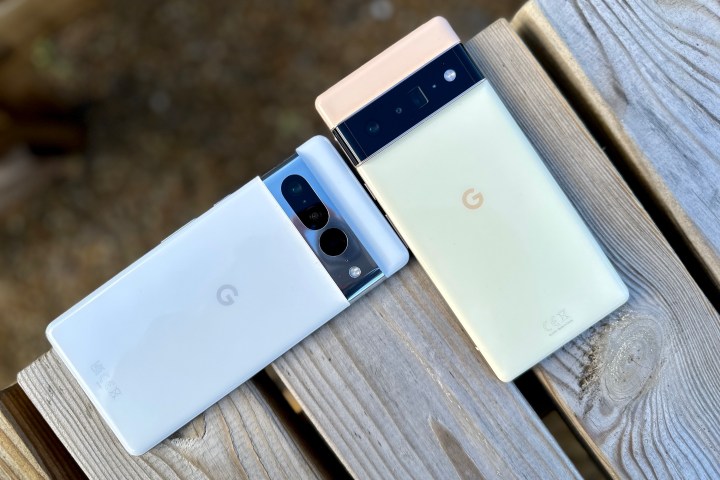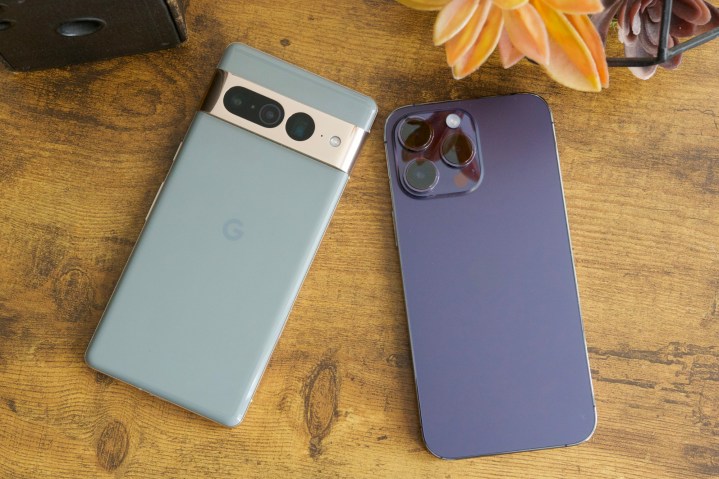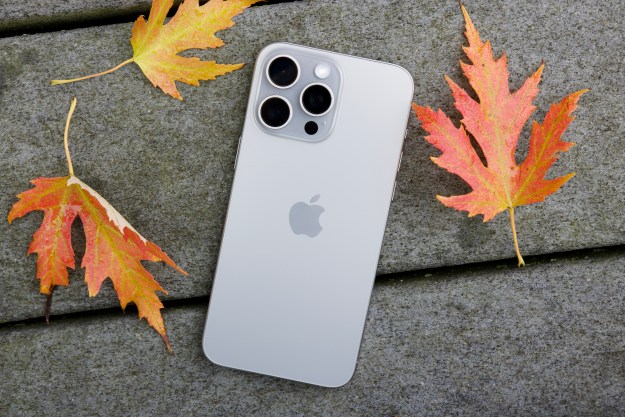There’s one thing almost all the smartphones released in 2022 have in common: if you’ve got a 2021 smartphone, or in some cases even a 2020 smartphone, there’s absolutely no need to upgrade this year. This isn’t to say you shouldn’t buy a new phone, or that there’s anything wrong with the phones out this year — it’s more a statement that the two-year upgrade cycle is now relevant to us all as tech fans.
I’m aware I’ve got to back all this up, and luckily I’m not short of examples. But this isn’t just the result of a spec sheet comparison. I’m speaking with authority because I’ve paid to upgrade several phones this year, and I can tell you it’s absolutely not worth it. I’m not just looking at specs on paper and telling you not to bother — I’m actually living with (and paying for) it. Please learn from my lack of self-control.
The iPhone, upgraded?

I’ll start with the device I get asked about the most, the iPhone 14 Pro. “Should I upgrade to it?” is the common question, and I use my own experience to answer it. I updated my iPhone 13 Pro to the iPhone 14 Pro, (and my iPhone 12 Pro to the 13 Pro before that) — blatantly ignoring the advice I’m about to give out over the next few hundred words. I’ll start off by saying that the 14 Pro is a brilliant smartphone, and you will be very happy with it should you buy it. And then comes the “but.”
If you’ve got an iPhone 13 Pro, the only real difference between it and the iPhone 14 Pro you’ll notice on a daily basis is the Dynamic Island. It’s cool and will no doubt only become more useful over time, but right now, it’s just not that exciting because primarily only Apple’s apps and services take advantage of it. It’s not a reason to upgrade, unless you want to nurture a virtual pet, that is.
Outside of the Dynamic Island, the camera is just as good, I haven’t noticed any real difference in performance with the new A16 Bionic processor compared to the A15 in the 13 Pro, and the shape, design, size, and weight are all identical. The iPhone 13 Pro runs the same software and connects to the excellent Apple Watch in exactly the same way. I’d also go as far as to say that if you’re happy with your iPhone 12 Pro, then I’d keep that for now too. It’s still excellent, and I still love the camera.
If you’ve got an iPhone 11 Pro, then you will feel like you’re getting a brand-new phone if you upgrade to the iPhone 14 Pro. But not so much with the 12 Pro and 13 Pro. It’s a similar story with my second example, the Samsung Galaxy Z Fold 4. Again, I upgraded my Galaxy Z Fold 3 to the Galaxy Z Fold 4, and honestly, the daily use differences between them are minimal.
Small steps in the Android space, too

The Z Fold 4 is a great example of how technically significant differences (the cover screen’s bezel size, durability, and a processor upgrade) make it a better smartphone, but not truly worth the financial outlay if you have the Z Fold 3. It’s even debatable whether it’s worth upgrading from the Galaxy Z Fold 2, as all of them share basically the same fantastic 7.6-inch 120Hz screen inside, and that’s the main reason anyone would want the phone in the first place.
What about the Pixel 7 Pro? No, you don’t need to upgrade your Pixel 6 Pro to it, as you won’t notice all that many changes. I’d also say that there’s a chance you may get a less reliable Pixel 7 Pro if you upgrade, adding an unwanted risk factor to an already dubious financial decision. The Pixel 6 Pro is brilliant, and so is the Pixel 7 Pro (in my experience), so just stick with what you have, provided you’re happy with it.

The Pixel 5’s boring design makes it tempting to upgrade, as the Pixel 7 Pro is a far prettier, much more modern-looking device. But the Pixel 5’s diminutive size makes it unique, and if you’re thinking of getting the Pixel 7 as a replacement, there’s not much difference between the cameras to tempt you.
It’s not just these three phones. It’s applicable across the world of smartphones — from the Oppo Find X3 Pro and the newer Find X5 Pro to the Samsung Galaxy A52S and the more recent Galaxy A53. It even applies to some smartwatches, with an upgrade from the Apple Watch Series 7 to the Apple Watch Series 8 being particularly notable, and tablets like the iPad Pro too. If you’re thinking about replacing a phone from last year with one from this year, think really hard about why you’re doing it.
The two-year upgrade cycle

Three smartphones — the iPhone 14 Pro, the Galaxy Z Fold 4, and the Pixel 7 Pro — are my favorites of 2022, and they replace three of my favorites from 2021. But they only replace them in the manufacturers’ product ranges, and they didn’t need to replace them in my hand. The popular “iterative update” putdown common in this situation does the work that goes into these phones a disservice, and dismissing them this way is a misunderstanding of who new phones are for today.
What I mean is this: In 2022, more so than any other year, the phones released aren’t really for you if you have a phone from 2021, and perhaps not even if you have a phone from 2020 either. The technology, design, and ability of top-level phones from the last two years have been so impressive that unless your existing, one- or two-year-old phone is broken in some way (the screen, battery, or case), it likely does everything the very latest model can, or very close to it.
For tech fans, there has always been a case for ignoring a two-year upgrade cycle in the past, leaving it only to those forced into it by carrier contracts. But today, it’s not only sensible from a monetary perspective ,but also from a tech perspective. Wait two years to upgrade your phone, and you will probably notice far more difference than you would after just a year.
It sounds logical and there are people doing it already, but many are not tech geeks interested in owning and experiencing the latest models. This year, I’ve spent my own money upgrading two of my favorite phones from last year, and while they are fantastic and I’m very pleased with both and highly recommend them as purchases, they’ve highlighted that for the first time that the two-year upgrade cycle now applies to everyone — tech fans included.
Editors' Recommendations
- I found an amazing new way to use my iPhone 15 Pro Max
- 5 phones you should buy instead of the Samsung Galaxy S24 Plus
- Here’s how Apple could change your iPhone forever
- Every foldable phone we’re expecting in 2024
- 5 phones you should buy instead of the Samsung Galaxy S24


